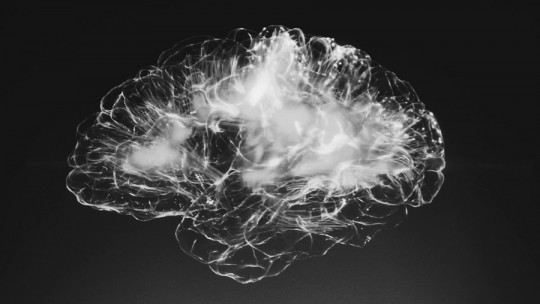Like many other brain processes, human memory cannot be defined as a single function responsible for storing, encoding, retaining and retrieving everything that surrounds us. But it is divided into different types according to the way it works. When these systems fail, alterations such as semantic dementia appear which we will address throughout this article.
But first of all and to clarify terms, what is semantic memory? Semantic memory gives us the possibility of storing everything in our long-term memory. Specifically, it refers to the memory of meanings, understandings and other conceptual knowledge.
Alteration in this type of memory causes disorders such as semantic dementia Which is manifested through difficulties in language, or the recognition of objects or faces. Even so, people who suffer from this type of disease can lead relatively normal lives.
What is semantic dementia?
Semantic dementia is a progressive neurodegenerative disorder whose focus of action is on language. This disorder is unique in that it presents a gradual loss of semantic memory, both verbally and non-verbally.
People who suffer from it progressively lose their language and show an impoverishment of semantic knowledge This results in great difficulties in naming, understanding and recognizing objects, as well as remembering names and faces.
Causes
The main cause of semantic dementia is frontotemporal lobe degeneration (FTLD) ; being one of the three clinical syndromes mostly associated with this degeneration.
To clarify these terms a little, the main functions of the temporal lobe have to do with memory, with the dominant temporal lobe being the one involved in remembering words and names of objects; and the non-dominant one is in charge of our visual memory.
This injury can have its origin in:
Symptoms
Semantic dementia is characterized by presenting two main symptoms:
1. Perceptual disorder: associative agnosia and prosopagnosia
The person who suffers from this disorder is unable to recognize or understand visual stimuli, specifically faces, objects or names.
This makes it difficult for the patient to interact with others and lead a normal life in society Which represents an added risk of social exclusion. It is not difficult to understand the frustration that can be felt when not being able to recognize the people around you; including, of course, your loved ones.
2. Language deficit: fluent but empty language
During the beginning of the disorder, the patient manifests difficulties in finding the correct words to express himself; compensating for it through the use of other associated terms. For example, if you wanted to say pen, you might say ink or quill.
As the disease progresses, the meaning of the most common words is also lost Therefore he could no longer use ink to refer to the pen, but would use more generic words such as utensil or instrument.
Gradually, the language will become much poorer; ending up presenting an incomprehensible speech. Furthermore, all these difficulties will also occur in written language, so the patient’s communication with his or her surroundings will become increasingly complicated.
In addition, semantic dementia can present many other characteristics:
Diagnosis and prognosis
Although there is no cure for semantic dementia, early diagnosis along with pharmacological therapy is key to good patient functioning and, consequently, improving the patient’s prognosis; giving you a higher quality of life.
Since dementia diseases are complicated to diagnose, it is essential to take into account the history of the disease, and complement the patient’s information with interviews with family members, and thus thoroughly investigate changes in behavior and personality.
There are three forms of diagnosis that are most successful. They are the following.
1. Neuropsychological tests
These tests include both verbal and non-verbal tasks, and are specified in the Concrete and Abstract Word Synonym Test by Warrington, or the Pyramids and Palm Trees Test by Howard and Patterson (1992).
2. Neuroimaging techniques
Through the use of magnetic resonance imaging, a characteristic pattern of atrophy can be observed in the temporal lobes (especially the left), affecting the lower and anterior areas to a greater extent.
Thanks to these techniques, semantic dementia can be differentiated from other subtypes of lobar degeneration such as frontotemporal dementia or progressive non-fluent aphasia.
3. Histopathology
Almost all patients diagnosed with this type of dementia present positive results for ubiquitin and TDP-43.
Treatment
As noted above, there is no cure for this disorder. But the administration of pharmacological therapy to compensate for the effects associated with this disease is common. Some of these drugs are:
1. Atypical neuroleptics
Also called atypical antipsychotics. They act on serotonin receptors, as well as dopaminergic receptors; used in this case to treat the patient’s aggressive behaviors and agitations.
2. Serotonin reuptake inhibitors
Commonly called antidepressants. This drug increases serotonin levels by inhibiting its reuptake, thus relieving depressive symptoms, compulsions, etc. that the person can present.
3. Benzodiazepines
This drug is a psychotropic medication (acts on the central nervous system), and is characterized by its sedative, anxiolytic and hypnotic effects, among others. In semantic dementia it is used to cushion anguish, anxiety and insomnia.









